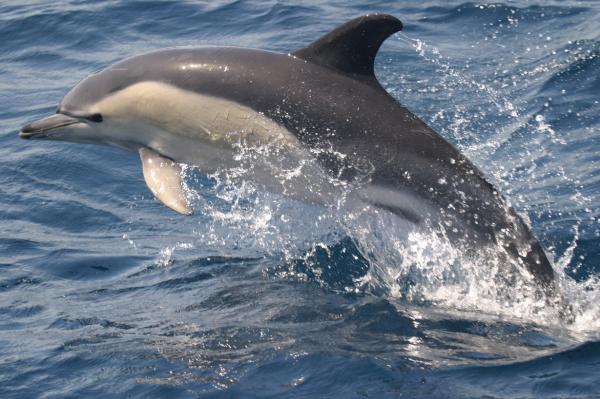Movement in dolphins also follows the brief rule of human language
The two researchers from the Polytechnic University of Catalonia (UPC) and the University of Aberdeen in the United Kingdom for the first time have demonstrated a brief rule in human language, whereby words are used at the highest frequency are the shortest words, also true for other animals. They demonstrated that dolphins tend to move more simply when in surface water.
"The movement of dolphins on the surface layer also follows a brief rule like human language, which tends to find the most simple and effective ways," said Ramón Ferrer i Cancho, co-author. The study, staff of UPC's Department of Languages and Information Technology Systems, said that the rule of thumb, first proposed by philologist George K. Zipf, states that words have The most frequently used frequencies are the shortest words.
 Scientists have demonstrated for the first time a brief rule in human language, whereby the words used with the highest frequency are often the shortest words, also true for other animals.They demonstrated that dolphins tend to move more simply when in surface water.(Photo: CIRCE)
Scientists have demonstrated for the first time a brief rule in human language, whereby the words used with the highest frequency are often the shortest words, also true for other animals.They demonstrated that dolphins tend to move more simply when in surface water.(Photo: CIRCE)
Ferrer i Cancho and David Lusseau from Aberdeen University, Scotland have demonstrated that when dolphins move at the surface of the water, they tend to perform simple movements, like the 'language saving' phenomenon , according to which people tend to use words with fewer letters when they speak or write
This survey includes the English version of the novel 'Dorian Gray's Painting' by Oscar Wilde. The most commonly used results in the work are the 'the' article, while the words have a larger structure, such as 'responsibilities', very rarely. New Zealand, the study investigated the activity of these animals on the surface layer, each of which is made up of one to four basic units.
In total, scientists have counted more than 30 movements and related units in it, and have shown that movement only involves one repeated unit most times, while movements related to four fewer units.
'The results show that the simple and effective ways of prevailing in dolphins are similar to the use of human language.'
The study author said that the survey results show that human language is also based on the same principles as the basic principles of other biological systems, which 'reminds us of all. Previous barriers between research should be lifted. '
Refer:
1. Ferrer-i-Cancho et al.Efficient coding in dolphin surface behavioral patterns.Complexity, 2009;14 (5): 23 DOI: 10.1002 / cplx.20266
- New hypothesis about human language
- Artificial intelligence predicts 'what will you do'
- Human language derives from the song of apes and birds
- Decipher the mysterious language of dolphins
- Create 'human chains' to save the herd of dolphins trapped under the bridge
- Dolphin 'interpreter'
- Meet the dolphins stranded, never drop them back naturally because ...
- Future technology helps people talk to animals
- India recognizes dolphins as human rights
- Measles virus may be the cause of dolphin deaths in the United States
- Dolphins also have their own language
- What language did the ancients use?
 Animal 'suffering' after hibernation
Animal 'suffering' after hibernation Why do goats climb well?
Why do goats climb well? Scientists were surprised to see chimpanzees eating turtles
Scientists were surprised to see chimpanzees eating turtles Giant catfish died deadly due to drought in Thailand
Giant catfish died deadly due to drought in Thailand